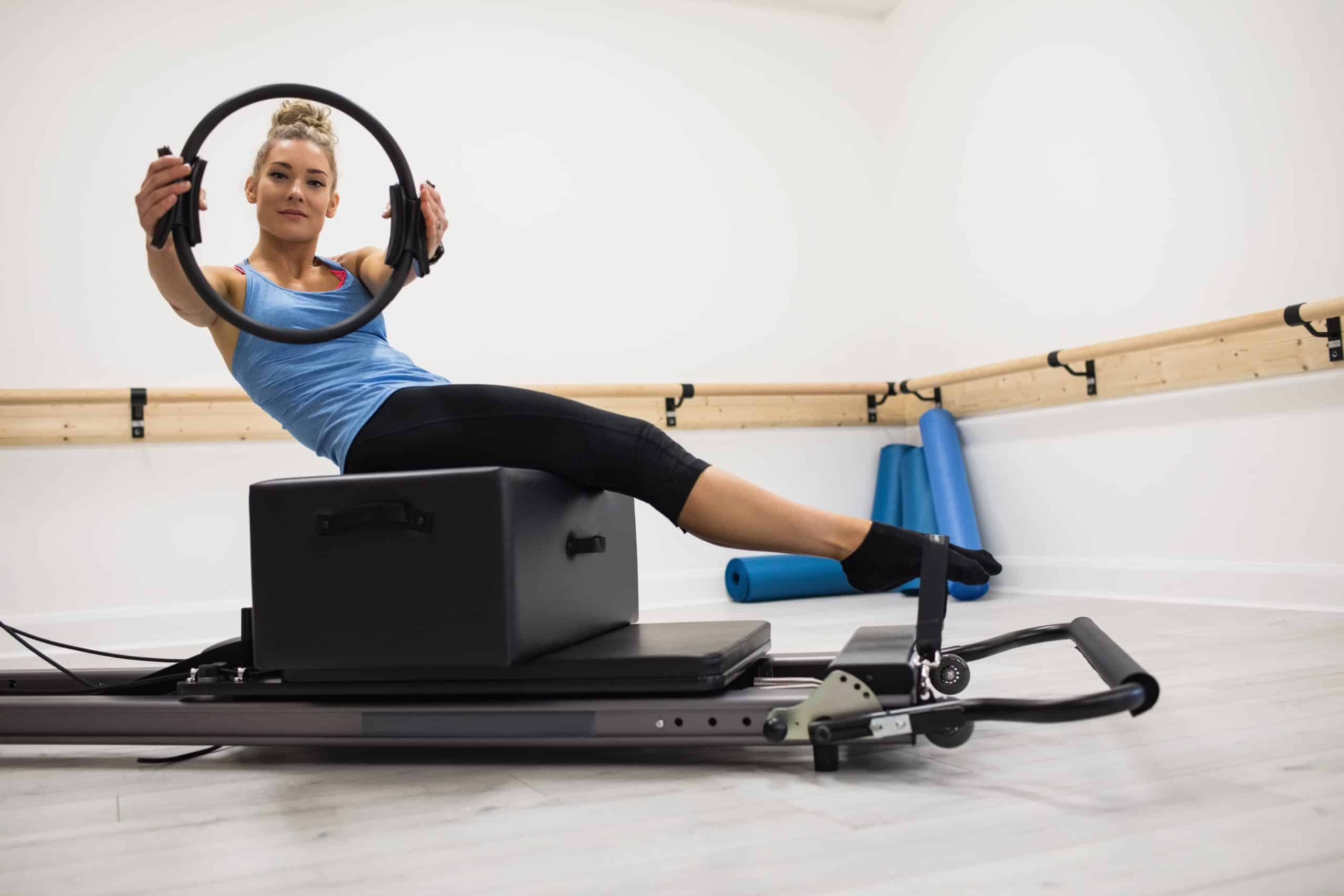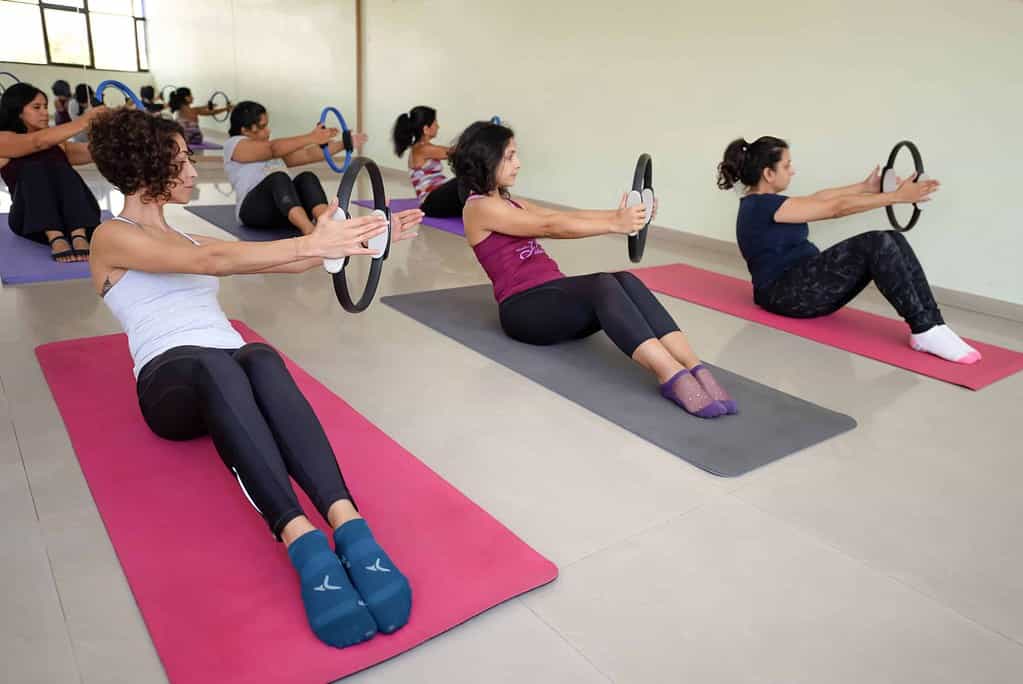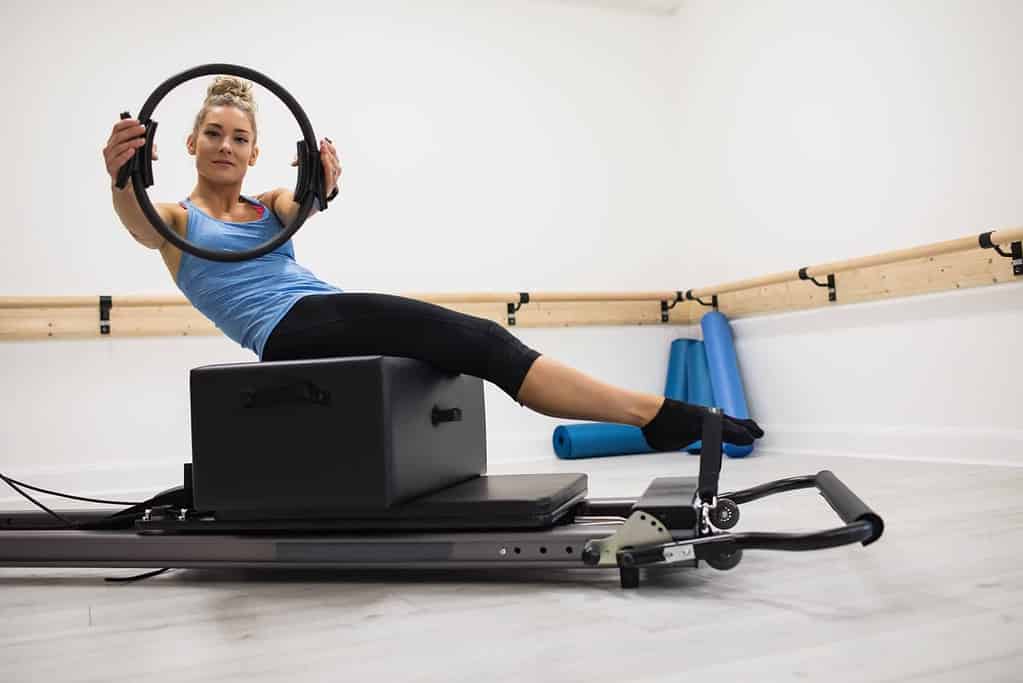Pilates Props: Magic Circle

Today, we will be discussing the mighty ‘Magic Circle.’ Before you think you have entered some witchcraft institute, let me clarify. The magic circle is not some sorcerous Lord of the Rings like object, but one of the coolest Pilates props.
What is the magic circle?

Also known as the Pilates ring or the exercise ring, the magic circle is one of the apparatus designed by Joseph Pilates that enhances your mat or equipment Pilates workouts. As the name suggests, it is a circular ring. It is made of a relatively flexible material which allows us to put pressure on it from the inside and outside while it provides a resistance. Most magic circles come with padding on two opposite sides of the ring to allow us to use it without the circle poking into our bodies.
The ring is a useful tool for adding an extra strength and stability challenge much like the resistance band.
How do we use the magic circle?
We can use the ring in multiple ways. The most commonly used position is between or around both arms or legs. But we can also place it between our torso and arms or between the floor and our body.
The magic circle works as a spring. When we push into one end of the circle, it deforms from its original shape and as we release the pressure, it comes back to its original form. This recoil action of the ring helps in working the muscles both concentrically and eccentrically. The harder we press into the ring the more resistance it provides.
Magic circle’s effect on the body
When we place it on our limbs, it creates a deeper and more dynamic connection between the limbs and the trunk. This happens as it activates muscles that go deep into the core to hold the ring in its position. For abdominal exercises, to increase the effort ring can be placed between. More leverage. It increases the weight of the lever when placed between or around the legs for abdominal exercises.
The further away you keep the ring from the torso, the resistance increases.
The circle is great for isometric toning i.e. holding the ring in between the legs of arms and pulsing. This trains the muscles without changing the length of the muscles. Pulsing into the circle by placing it between the legs is also an effective way to connect into the adductors. pelvic floor and inner thigh muscles. Similarly, when you place it between your arms, it connects deeper into the back and chest.
When held between the arms, it helps in stabilising the shoulders while moving other parts of the body. For example, in the seated roll down, holding on to the magic circle in the arms, helps in controlling the movement of the spine as we place one vertebra down at a time.

Not only is it great for muscle toning, but it also helps in training the fascia. When we do any pulsing action, it activates the Pacini receptors of the fascia. And any deep pressure activates the Golgi receptors of the fascia. These help in providing proprioceptive feedback. For example, when we do a spine twist on the reformer while pressing into the magic circle, it helps to align our shoulders as we rotate from the upper torso while keeping the lumbar spine and pelvis stable. (Learn more about Fascia in our workshop)
How to hold the ring
There are some dos and don’ts with the magic circle which you should keep in mind before using it.
Make sure that you place the pads comfortably where they do not give excessive pressure on any bony prominences. Also, hold the ring with a good grip and press evenly so that it doesn’t spring back and hurt you.
Note: Consult a medical professional if you have any condition in which resistance exercises should be avoided.
Exercises with the magic circle
The magic circle can be incorporated into various exercises. If you use it once, you will realise that you don’t need big and heavy weights to work out on your own ever. The effect of this ring is truly magical.
Watch this YouTube video for some beginner-level exercises with the magic circle. For more, join our classes. Check out the schedule here.
